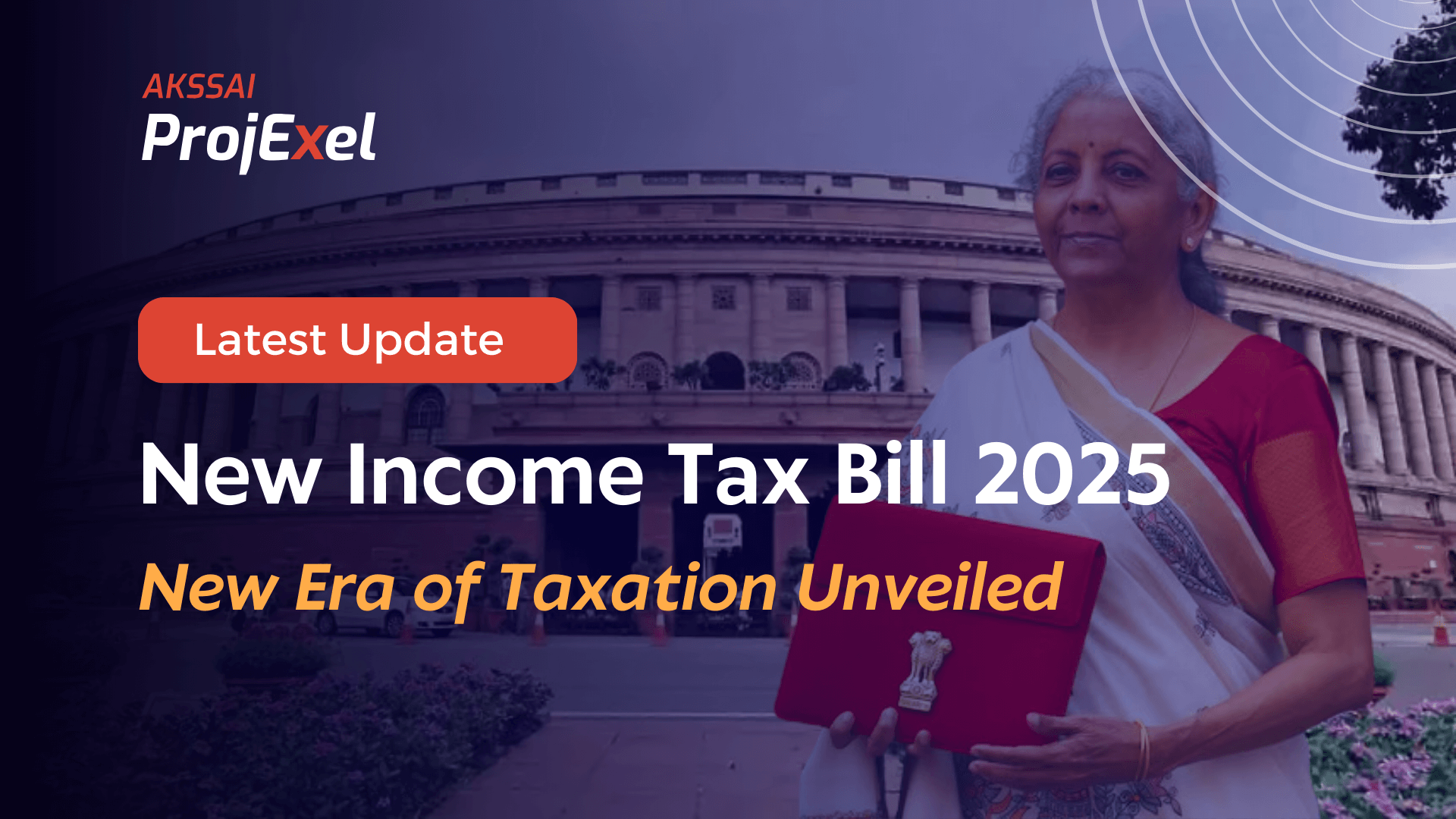What is Withholding Tax in India | Withholding Tax Rates in India?
- What is Withholding Tax in India | Withholding Tax Rates in India?
- What is Withholding Tax in India?
- Types of Payments Subject to Withholding Tax
- Specialized tax expertise, at your service.
- Withholding Tax Rate in India
- Other Implications of Withholding Tax in India
- Key Differences Between Withholding Tax and TDS
- Conclusion
Withholding tax is a significant component of India’s taxation system, playing a crucial role in collecting revenue for the government and ensuring tax compliance by taxpayers. In this comprehensive guide, we will take an in-depth look into the concept of withholding tax in India. We will explore various aspects, including its fundamental principles, types of payments subject to withholding tax, tax liability based on residential status, withholding tax rate in India, implications, and the intricate web of regulations and compliance.
What is Withholding Tax in India?
Withholding tax in India is a critical component of the nation’s tax collection system. Essentially, it functions as a tax collected right at the source of income payments, serving as a crucial element in ensuring tax compliance and revenue generation for the government. This applies to specific income payments, both to residents and non-residents and is characterized by the payer withholding a specified percentage of the payment and forwarding it to the government.
Withholding tax ensures that tax liabilities are addressed proactively and that tax payments are initiated at the moment income is disbursed. Doing so, not only guarantees timely revenue collection for the government but also reinforces the commitment to tax adherence among taxpayers.
Furthermore, withholding tax operates on the principle that the entity making the payment is responsible for retaining a portion of that payment and forwarding it to the government. This approach differs from conventional taxation methods, such as the Tax Deducted at Source (TDS), where the tax liability is directly imposed on the income recipient. We shall read about the differences between withholding tax in India and TDS later in this article.
Types of Payments Subject to Withholding Tax
In India, the scope of withholding tax in India is extensive, covering a diverse range of income payments across various sectors. Understanding which types of payments fall under the purview of withholding tax is essential for both businesses and individuals to ensure compliance with tax regulations. Here’s a closer look at the categories of payments subject to withholding tax:
1. Interest Payments: Any interest payment made by individuals or entities is subject to withholding tax. This includes interest accrued on loans, debentures, and certain financial instruments. Whether it’s a bank disbursing interest on a fixed deposit or a corporation paying interest on a bond, the obligation to withhold tax remains a critical component of the transaction.
2. Dividend Payments: Companies distributing dividends to their shareholders are mandated to withhold tax on the dividend amount. While dividends paid to resident Indians are typically exempt from withholding tax, those paid to non-resident shareholders may be subject to a withholding tax rate of 20%, which can often be reduced under applicable tax treaties.
3. Royalty Payments: Payments made for the use of intellectual property rights, such as patents, trademarks, or copyrights, are subject to withholding tax. This category encompasses licensing agreements and payments for utilizing technology or creative works. Intellectual property transactions between residents and non-residents are subject to specific withholding tax regulations.
4. Consultancy and Professional Fees: Payments to individuals or entities for professional or consultancy services may indeed attract withholding tax. This category is expansive and covers a wide array of services, including legal, accounting, management consulting, and other specialized professional services. Whether it’s a law firm engaging a consultant or a corporation seeking financial advisory services, the responsibility for withholding tax remains significant.
5. Salary and Wages: Employers have a crucial role in the withholding tax framework. They are required to withhold tax on salaries and wages paid to their employees. This ensures that income tax obligations are addressed right at the source, even before the employee receives their salary. Withholding tax on salary and wages plays a pivotal role in the tax deduction process and is integral to both employers and employees in meeting their tax liabilities.
6. Rent Payments: Payments made for renting or leasing properties, both residential and commercial, are subject to withholding tax. This includes rental income from real estate properties, leased office spaces, or any other form of rented property. Landlords are obligated to withhold tax from the rent amount and remit it to the government.
Adherence to the regulations withholding tax in India not only ensures legal compliance but also contributes to the efficient functioning of the taxation system, ultimately benefiting the nation’s fiscal health.
Residential Status in India
The residential status of an individual in India plays a pivotal role in determining their tax liability. In India, there are two primary residential statuses: “Resident Indian” and “Non-Resident Indian” (NRI). An individual is considered a resident Indian if they have stayed in India for a prescribed period during the previous year, which can be:
- 182 days or more in the previous year (April 1st to March 31st).
- 60 days or more for an aggregate of 365 days or more in the four years preceding the previous year.
Anyone who does not meet these requirements is categorized as an NRI for tax purposes.
Tax Liability Based on Residential Status
Tax liability differs for residents and non-resident Indians. NRIs are liable to pay tax on income earned in India from specific sources, including:
- Salary paid for services provided in India.
- Income from property in India or income arising from business carried out in India.
- Fees, royalties, and interest paid by resident Indians to NRIs for technical services provided by the NRI in India.
Understanding residential status is crucial as it impacts tax liability. The residential status of the payee, in particular, influences withholding tax.
Specialized tax expertise, at your service.

Withholding Tax Rate in India
The withholding tax rate in India can vary depending on the nature of the payment and the residential status of the recipient. Here are some key withholding tax rates applicable in India:
1. Interest Payment: For interest paid to residents, the withholding tax rate is typically 10%. However, for non-residents, it can vary based on the tax treaty between India and the recipient’s home country. It usually ranges from 10% to 20%.
2. Dividend Payment: Dividend payments to residents are typically tax-free in India. However, companies distributing dividends to non-resident shareholders may be subject to a withholding tax rate of 20%, which can be reduced under tax treaties.
3. Royalty Payment: The withholding tax rate for royalty payments to non-residents is generally 10%. However, this rate can also be reduced based on tax treaties.
4. Consultancy and Professional Fees: Payments made for professional or consultancy services can be subject to a withholding tax rate of 10% for residents and higher rates for non-residents, depending on tax treaties.
5. Salary and Wages: Employers are required to withhold tax on salary and wages paid to employees as per the applicable income tax slabs.
6. Rent Payment: For rent payments, the withholding tax rate is typically 10%. However, this rate can vary based on the specific terms of the lease agreement and tax treaties.
The Basics of Withholding Tax in India
Withholding tax, also known as retention tax, is a tax deducted at the source by the payer of income. Under this mechanism, the taxable amount is deducted before making a payment to the payee. While it may seem similar to Tax Deducted at Source (TDS), there are distinctions between the two.
Withholding tax in India applies to various sources of income, including salary, work contracts, commissions, rent, interest, professional services, technical services, and income from business.
Let’s illustrate the concept of withholding tax with an example:
Example: Mr A, a doctor, provides medical services to Mr B, a patient. Mr. B paid the bill of Rs 50,000 for the Dental services. When Mr. B pays the bill to Mr. A, he credits Rs 45,000 to Mr. A and deducts Rs 5,000 as withholding tax. Mr. B is responsible for depositing the deducted withholding tax with the Central Government. Mr. A can claim an income tax credit for the deducted tax when filing his income tax return.
Withholding tax applies to payments made to non-resident individuals. When a liability arises to make payments to an NRI, the payer must deduct the tax at the source. Under Section 195 of the Income Tax Act, the person responsible for making payments to an NRI must deduct the tax at the time of payment or credit to the NRI’s account.
Benefits of Withholding Tax
Why is withholding tax in India charged? There are several benefits to this tax mechanism:
1. Early Revenue Generation: Withholding tax ensures immediate revenue generation for the government. Payers deduct the tax while making payments, providing the government with funds without waiting for the end of the fiscal year.
2. Transaction Scrutiny: Withholding tax places every transaction under scrutiny. Payers are responsible for deducting and depositing the correct tax amount, ensuring that each transaction is thoroughly examined at multiple points.
3. Preventing Tax Evasion: Withholding tax effectively prevents tax evasion. Both the payee and payer of withholding tax cannot escape the tax net, as the responsibility lies with the payer to deduct and remit the tax.
Other Implications of Withholding Tax in India
Understanding the implications of withholding tax is essential for both payers and payees:
1. Cash Flow Impact: For payers, withholding tax represents an immediate cash outflow, as the deducted tax must be remitted to the government. This can affect cash flow management.
2. Compliance and Penalties: Non-compliance with withholding tax regulations can result in penalties and legal consequences for both payers and payees.
3. Tax Planning: Payees, especially non-residents, should explore tax planning strategies to minimize the impact of withholding tax on their income.
4. Tax Credits: Resident taxpayers who have had withholding tax deducted from their income can claim a credit for the tax deducted while filing their annual income tax returns.
5. Reduced Tax Liability: Tax treaties can significantly reduce the withholding tax liability for non-resident payees. It’s essential to explore these treaties to minimize tax costs.
Tax Liability Based on Residential Status
Tax liability differs for residents and non-resident Indians. NRIs are liable to pay tax on income earned in India from specific sources, including:
- Salary paid for services provided in India.
- Income from property in India or income arising from business carried out in India.
- Fees, royalties, and interest paid by resident Indians to NRIs for technical services provided by the NRI in India.
Understanding residential status is crucial as it impacts tax liability. In particular, the residential status of the payee particularly influences withholding tax in India.
Assessment of Non-Resident Assessees
Agents, who may be employees, individuals with business connections, or those involved in the transaction, assess non-resident assesses. These agents facilitate tax assessment for non-resident taxpayers. Consequences of non-payment of withholding tax include penalties and interest.
Key Differences Between Withholding Tax and TDS
While withholding tax in India and Tax Deducted at Source (TDS) share similarities, they differ in scope and approach:
- Govt. deducts TDS at the time of payment to contractors, professionals, etc., within India, while withholding tax applies to foreign transactions involving non-resident individuals.
- TDS primarily applies to Indian residents, whereas withholding tax applies to payments to non-resident individuals.
Withholding Tax Payment Due Date
The entity deducting withholding tax must pay it by the 7th day of the month following the deduction, except for March, when the due date is April 30th.
Withholding Tax Returns Filing Due Date
People file returns quarterly, which contain details of payees and the tax deducted for that quarter. Here are the due dates for filing returns:
| Quarters | Months | Due Dates |
|---|---|---|
| 1st Quarter | April-June | July 15th |
| 2nd Quarter | July-Sep | October 15th |
| 3rd Quarter | Oct-Dec | January 15th |
| 4th Quarter | Jan-March | May 15th |
Withholding Tax Certificate
Payers must provide withholding tax deduction certificates to payees for every quarter. You can obtain these certificates online from the TRACES website.
PAN Card and Filing of Returns
Foreign companies receiving income from Indian companies must register with Indian tax authorities and obtain a Permanent Account Number (PAN). Failure to do so results in higher withholding tax rates and limited avenues for tax credits.
Regulations and Compliance
Understanding the regulations and complying with them is crucial for both the payer and the payee to avoid legal issues. Here are some key points to consider:
1. Tax Deduction and Collection Account Number (TAN): Payers must obtain a TAN, a 10-digit alphanumeric number, to deduct and remit withholding tax to the government.
2. Tax Deduction at Source (TDS): Payers must deduct the applicable withholding tax when making the payment. You must remit the deducted amount to the government within the specified time frame.
3. Filing of TDS Returns: Payers must file TDS returns periodically, providing details of the tax deducted and the payees. Failure to file these returns can result in penalties.
4. Form 15CA and 15CB: For certain payments to non-residents, including royalty and consultancy fees, You must submit Form 15CA and 15CB to the Income Tax Department to ensure proper tax compliance.
5. Tax Treaty Benefits: Non-resident payees should explore tax treaties between India and their home countries to determine if they are eligible for a reduced withholding tax rate in India.
Recent Developments and Changes
The landscape of withholding tax in India is not static and can change with time. It’s crucial to stay updated with recent developments and changes in tax laws and regulations. As of my last knowledge update in September 2021, here are a few notable developments related to withholding tax in India:
1. Budgetary Changes: The government often introduces changes to the withholding tax rate in India and its regulations in the annual budget. Taxpayers should review the budget announcements to stay informed about any changes that may affect them.
2. Digitalization: The Indian government has been moving toward digitalization in tax compliance. This includes the introduction of the “e-assessment” system, which aims to streamline the assessment process and reduce manual intervention.
3. Transfer Pricing: Transfer pricing regulations have become more stringent in recent years. Multinational corporations operating in India need to comply with transfer pricing documentation requirements to avoid disputes with tax authorities.
4. Treaty Changes: Tax treaties between India and other countries can undergo revisions. Non-resident payees need to be aware of any updates in these treaties that may impact the withholding tax rate in India.
Conclusion
Withholding tax in India is a complex but essential aspect of the tax system. It ensures the government receives revenue promptly, scrutinizes transactions, and prevents tax evasion. Understanding the applicable rates, regulations, and implications is crucial for both payers and payees. Consultation with tax experts is advisable to navigate this intricate landscape and ensure compliance with Indian tax laws. Staying informed and compliant will contribute to efficient financial operations for individuals and businesses in India.
Are You Looking For an Expert Tax Consultation
We provide various tax services in many areas, including business tax, international tax, transaction tax, and more.




